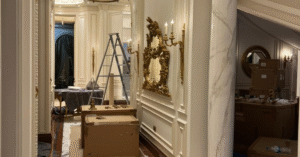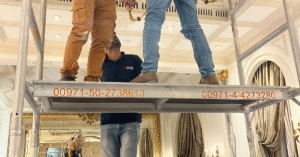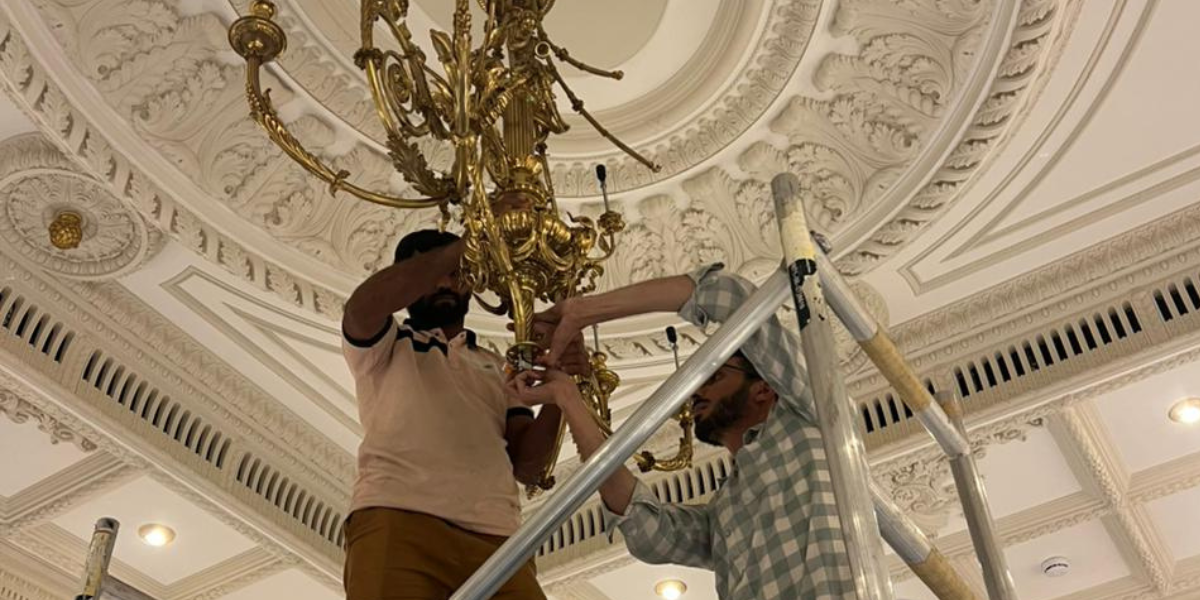Introduction Why You Might Want to Move Your Dining Room Light
When it comes to home renovations or even simple updates, the dining room light fixture can play a key role in setting the mood of the space. Whether you’re upgrading to a more modern fixture or simply rearranging the room’s layout, you might find yourself needing to move your dining room light.
Moving a dining room light can seem like a big task, but with the right preparation and steps, it can be accomplished in a manageable way. This guide will help you understand why you might want to move the light, the steps to do it safely, and whether it’s a job you can tackle yourself or if you should hire a professional.

Common Reasons for Moving a Dining Room Light
There are several reasons you might need to move your dining room light. Let’s take a look at the most common ones.
Remodeling or Renovations
When undertaking a remodeling project, especially if you’re changing the layout or design of your dining room, the existing light placement might no longer be suitable. Moving the fixture can improve the room’s functionality and aesthetics.
Changes in Furniture Arrangement
Furniture arrangements change over time, and the location of the dining table might shift. In such cases, the dining room light might no longer hang directly above the table. Moving the light ensures optimal lighting.
Aesthetic Upgrades
Upgrading your light fixture can give your dining room a fresh, modern look. If your new fixture is larger or smaller than the old one, it may require moving the light to a different spot to ensure it is proportionate and provides adequate lighting.
Energy Efficiency
Sometimes, moving the light can optimize the distribution of light, helping you reduce energy consumption. For example, adjusting the light’s placement may allow you to rely on natural light for longer or more effectively illuminate darker areas.
Planning the Move
Before you start, it’s essential to properly plan out the move. Here’s how you can get started.
Assessing the Current Setup
Look at the current light fixture setup. Is the light centered over your dining table? Does the fixture work for the room’s needs? Note any issues like dim lighting, poor fixture placement, or outdated wiring.
Checking the Wiring and Circuit
One of the key factors in moving a light fixture is ensuring that the wiring is safe. If your new location for the fixture requires new wiring or changes to the existing circuit, you’ll need to plan accordingly.
Measuring and Marking the New Location
Measure where you want the new fixture to hang, ensuring it’s centered over the dining table. Mark the spot on the ceiling so you know exactly where to drill.
Tools and Materials Needed
You will need the following tools:
- Screwdrivers
- Pliers
- Wire strippers
- Electrical tape
- Junction box
- Ceiling mount bracket
- Light fixture
- Drill and drill bits
Safety Precautions
Working with electricity can be dangerous, so it’s crucial to take the necessary precautions.
Turning Off Power
Before you start, always turn off the power to the light fixture from the circuit breaker. This is the most important step to ensure you don’t risk electrical shock.
Proper Equipment
Use insulated tools to avoid accidental contact with live wires. Wear rubber-soled shoes and work in a dry area.
When to Call a Professional
If you’re not comfortable working with electrical wiring or if your home doesn’t have a junction box where you want to install the new light, it’s best to hire a licensed electrician.
Step-by-Step Guide to Moving a Dining Room Light
Remove the Old Fixture
-
Unscrew the light fixture from its current location and carefully lower it. If it’s heavy, consider having a helper hold it while you disconnect the wiring.
-
Use a voltage tester to make sure no electricity is flowing through the wires before you handle them.
Reroute or Extend the Wiring
-
If your new light location is further from the original, you will need to extend the wiring. You can use wire nuts to connect additional wiring if necessary.
-
Make sure the wires are securely connected and covered with electrical tape.
Prepare the Ceiling for Mounting
-
If your new location requires a new hole in the ceiling, use a stud finder to ensure that you drill in the correct spot.
-
You may need to install a new junction box to safely house the wires and support the weight of the fixture.
Install the Junction Box (If Needed)
-
Follow the manufacturer’s instructions for installing the junction box. Make sure it is mounted securely and can support the weight of your new light fixture.
Mount the New Fixture
-
With the wiring connected and the junction box in place, mount the light fixture according to the manufacturer’s instructions.
-
If necessary, adjust the fixture’s height so it hangs properly above the dining table.
Test the Installation
-
Once the fixture is installed, turn the power back on and test the light to ensure everything is working correctly.
-
If the light flickers or doesn’t turn on, double-check the wiring connections.
DIY vs Hiring a Professional
While moving a dining room light can be a DIY project, there are times when hiring a professional might be the best choice. Let’s weigh the pros and cons of each option.
DIY
Pros:
-
Cost savings (no electrician fees)
-
Personal satisfaction of completing the project yourself
-
Control over the design and placement of the fixture
Cons:
-
Risk of injury or electrical shock if not done properly
-
Potential to void home insurance if an electrical accident occurs
-
Complexity of the wiring and ceiling modifications might require professional help
Hiring a Professional
Pros:
-
Expert knowledge and skill
-
Safety and peace of mind
-
Guarantees the work is done to code and compliant with local building regulations
Cons:
-
Higher cost for labor
-
Scheduling an appointment may take time
Design Considerations
When moving your dining room light, consider how it will fit into the overall design of the room. Here are a few tips for choosing the right fixture and placement.
Fixture Size and Style
Choose a light fixture that complements the size of the room. A large chandelier works well in a spacious dining room, while a smaller pendant may be ideal for a more intimate space.
Lighting Placement for Dining Tables
Ensure the light fixture is centered above the table. The ideal height is typically 30–36 inches above the tabletop for a clear, even light.
Layered Lighting Ideas
Consider combining your dining room light with other lighting sources, like wall sconces or recessed lighting, to create layers of light and ambiance.
Matching with Room Décor
Your fixture should match the style of your dining room. Whether you have a modern, farmhouse, or traditional aesthetic, there are light fixtures to suit any design.
Troubleshooting Common Issues
Even after installation, you may encounter some issues with your dining room light. Here’s how to handle them:
Loose Wiring
If the light flickers or doesn’t turn on, check the wiring. Ensure that all connections are tight and that the power is correctly routed.
Uneven Hanging Fixture
If your light fixture isn’t hanging evenly, make sure the ceiling bracket is level and properly secured.
Flickering or Dimming Lights
This can be a sign of an issue with the wiring or a faulty light bulb. Try replacing the bulb or checking the circuit for any issues.
Cost Factors & Budgeting
When moving a dining room light, there are several cost factors to consider.
Electrician Costs
Hiring an electrician can cost anywhere from $75 to $150 per hour. The total cost will depend on the complexity of the job and the electrician’s rates.
DIY Material Costs
If you choose to do the job yourself, the materials you’ll need will cost between $50 to $150. This includes tools, electrical wire, junction boxes, and the light fixture.
Hidden Expenses
Be prepared for any unexpected costs like additional wiring, ceiling modifications, or the need for extra tools.

Conclusion & Final Tips
Moving a dining room light fixture can be a relatively simple process with proper planning and preparation. By following this guide, you can ensure that your new light fixture is both functional and stylish. Whether you choose to tackle the project yourself or hire a professional, the result will be a dining room with enhanced ambiance and improved lighting.
If you’re unsure about handling electrical work, don’t hesitate to contact a professional electrician to ensure the job is done safely and effectively.
